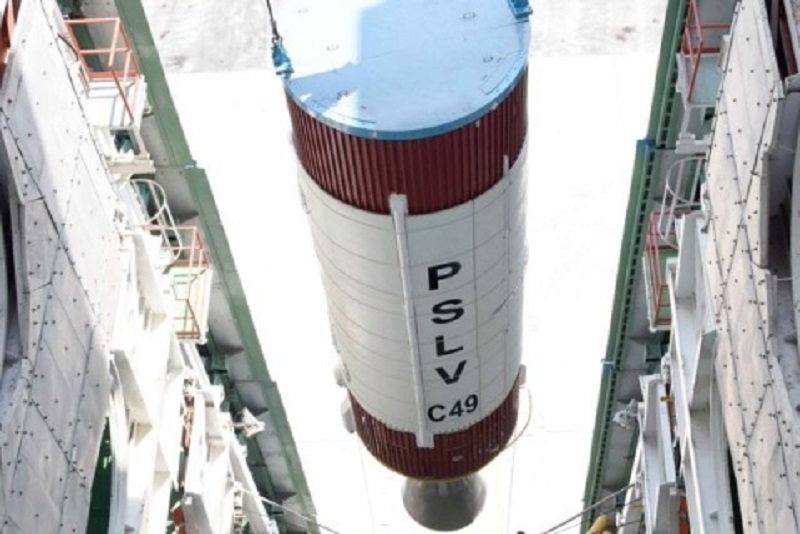
New Delhi: The Indian Space Research Organisation (ISRO) has made some remarkable achievements in 2023. India become the first country to reach the Moon’s south pole. ISRO also send a spacecraft to study the Sun.
Here is the list of accomplishments made by ISRO:
1. Chandrayaan-3:
ISRO launched its third lunar exploration mission, Chandrayaan-3 on July 14 (Friday) at around 2:35 pm. ISRO’s largest and heaviest rocket, LV3, carried the mission from Satish Dhawan Space Centre in Sriharikota of Andhra Pradesh.
Chandrayaan-3 successfully soft-landed on the Moon’s south pole on August 23 (Wednesday). India became the first country to softly land a spacecraft on the lunar south pole, and the fourth country to achieve a soft landing on the Moon, after the United States, the Soviet Union, and China.
Aditya-L1:
ISRO launched Aditya-L1 on September 2 at around 11:50 am. Aditya-L1 took off atop a PSLV-XL rocket from Satish Dhawan Space Centre (SDSC). This was the second launch from the Second Launch Pad at SDSC. Also popularly known as PSLV-C57, the mission marked the 59th flight of PSLV.
Aditya-L1’spacecraft will reach Sun about 125 days from launch. Aditya-L1’s final destination is a halo orbit around Lagrange point 1 (L1), which is located 1.5 million kilometres from Earth. Aditya-L1 will be located about 148.5 million kilometres from the Sun.
Gaganyaan TV-D1:
ISRO launched the first uncrewed flight mission of the Gaganyaan programme on October 21, 2023, at 10:00 am IST. Known as the Test Vehicle Development Flight (TV-D1) or Test Vehicle Abort Flight, the mission, carrying an uncrewed Crew Module and a Crew Escape System, took off from the First Launch Pad at Satish Dhawan Space Centre, Sriharikota, Andhra Pradesh.
Also Read: New Year 2024: Sharjah announces free public parking
PSLV-C55:
ISRO launched two Singaporean satellites on April 22, as part of the PSLV-C55 mission. PSLV-C55 launched TeLEOS-2 as the primary satellite, and hence, mission is known as the TeLEOS-2 mission. A polar satellite launch vehicle (PSLV) launched TeLEOS-2 and another satellite called Lumelite-4 at 2:19 from Satish Dhawan Space Cente.
Lumelite-4 was launched as a co-passenger satellite. Both TeLEOS-2 and Lumelite-4 belong to Singapore.

ISRO-Microsoft Collaboration:
On January 5, ISRO and Microsoft signed a Memorandum of Understanding. The agreement was signed to boost the growth of Indian space-tech startups and empower them with technology tools and platforms.
SSLV-D2:
ISRO launched the second developmental flight of the Small Satellite Launch Vehicle (SSLV) on February 10 at around 9:18 am. SSLV is ISRO’s smallest launch vehicle. The mission, called SSLV-D2, or EOS-07, was launched from the First Launch Pad, Satish Dhawan Space Centre.
RLV LEX:
On April 2, ISRO successfully conducted the autonomous landing test or air-drop landing experiment of the space agency’s reusable launch vehicle prototype. The mission, called RLV LEX, was performed in collaboration with the Defence Space Research Organisation (DRDO), and the Indian Air Force (IAF) at the Aeronautical Test Range (ATR), Chitradurga in Karnataka.

RLV TED:
ISRO conducted the first experimental mission of its Reusable Launch Vehicle – Technology Demonstrator (RLV-TD) on May 23, 2016, from Satish Dhawan Space Centre.
GSLV-F12:
ISRO launched India’s first second-generation satellite on May 29. The satellite, called NVS-01, was launched atop ISRO’s Geosynchronous Satellite Launch Vehicle at 10:42 am, from the Second Launch Pad, Satish Dhawan Space Centre. The launch vehicle used for this mission is called GSLV-F12.
Gaganyaan Module Propulsion System Test:
ISRO successfully tested the Gaganyaan Module Propulsion System on July 19. The test was conducted at ISRO Propulsion Complex in Mahendragiri. It involved five liquid apogee motor engines. Liquid apogee motor engines are chemical rocket engines used as the main engine in a spacecraft. Such an engine is controlled by two electrically-driven valves which provide thrust.

The five liquid apogee motor engines tested by ISRO were powered with a thirst of 440 Newtons. As many as 16 reaction control system thrusters were also tested. These had a thrust of 100 Newtons.
PSLV-C56:
ISRO launched the PSLV-C56 mission, the Indian space agency’s 90th mission, on July 30, at 6:30 am. PSLV blasted off into space with seven Singaporean satellites, including DS-SAR, the primary satellite for the mission. Therefore, the PSLV-C56 mission is also known as the DS-SAR mission. The satellites were launched from First Launch Pad, Satish Dhawan Space Centre, Sriharikota. The mission was performed in collaboration with NSIL.
Gaganyaan Drogue Parachute Tests:
ISRO has successfully performed a series of three drogue parachute deployment tests for the Gaganyaan mission. The tests were conducted by Vikram Sarabhai Space Center, ISRO, at the rail track rocket sled facility of the Terminal Ballistics Research Laboratory in Chandigarh, from August 8 to 10. ISRO conducted the tests in collaboration with Serial Delivery Research and Development Establishment, DRDO.

Post Your Comments